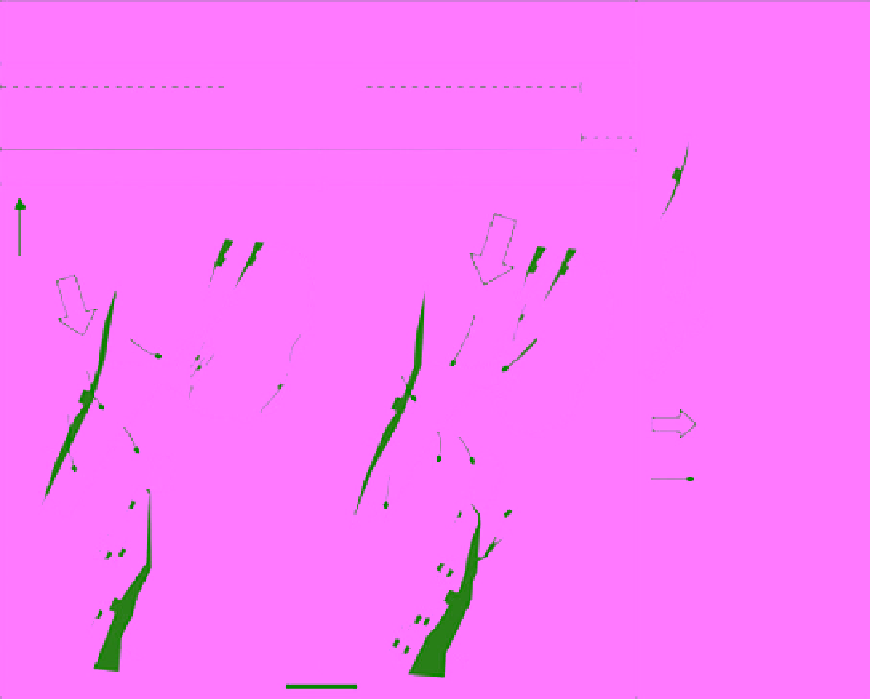Geoscience Reference
In-Depth Information
EARLY JURASSIC
COVER EXTENSIONAL TECTONICS
Rift initiation
LEGEND
Rift climax
upper Åre - middle Tilje
middle Tilje - top Tilje
Active normal faults:
tick on the
downthrown side
N
Depocentres above
blind basement faults
d1-d2
Smørbukk field
d1
d1
Sediment entry point
S
F
S
F
d2
Possible sediment
pathways
d2
S
F
Smørbukk fault
T
F
Trestakk fault
T
F
T
F
10 km
Fig. 23.
Schematic map of the Smørbukk field showing the active faults and the inferred sediment-dispersal patterns
during deposition of the Ǻre and Tilje formations. Modified from Marsh
et al
. (2010).
towards the S and E of the field (Fig. 19 cross-
sections I and II), by generating areas with greater
local accommodation. These localised thicker areas
indicate that the generation of accommodation var-
ied temporally throughout the upper Åre and Tilje
deposition suggesting that the rate of movement of
the Smørbukk and Trestakk faults was not constant.
This implies that rift-initiation tectonic pulses or
deformation clines (cf. Gawthorpe & Leeder, 2000;
Ravnås
et al
., 2000) were common and produced
localised multiple subsidence events in the area of
study, mostly intensified during the early and mid-
dle Pliensbachian. The presence of clinoforms
within reservoir units T1.1.2 and T1.2 (Fig. 19
cross-sections I and II) are associated to the local-
ised thickening and developed into the areas of
relatively accelerated subsidence. The height of
these clinoforms (up to 15 m thick each) indicates
that water depths were approximately 20 m to 25 m,
assuming a water depth of 10 m at the topset-foreset
break in slope (cf. Hansen & Rasmussen, 2008) and
perhaps as much as 40 m if compaction is taken
into account (cf. Terwindt & Breusers, 1972;
Nordahl, 2004). An apparent acceleration of rifting
(Marsh
et al
., 2010), accompanied by major exten-
sional tectonic activity (cf. Ravnås & Steel, 1998;
Gawthorpe & Leeder, 2000), resulted in a rapid
regional flooding event and the deposition of the
widespread shelf deposits of the Ror and Tofte
Formations (Fig. 22D).
The facies distributions presented here are broadly
consistent with the interpreted dispersal path mod-
els (Fig. 23) of Marsh
et al
. (2010) and indicate an
abrupt change of the sediment entry point, involv-
ing a shift from a NW entry point in sequence 2
(Fig. 24A) to an entry point in the N-NE in sequence
3 (Fig. 24B). The first of these was oblique to the
structural trend at the scale of the study area,
whereas the later was broadly parallel to the NE-SW
oriented faults and to the grain of any differential
subsidence related to their motion. The entry-point
switch correlates with the formation of SB3

Search WWH ::

Custom Search